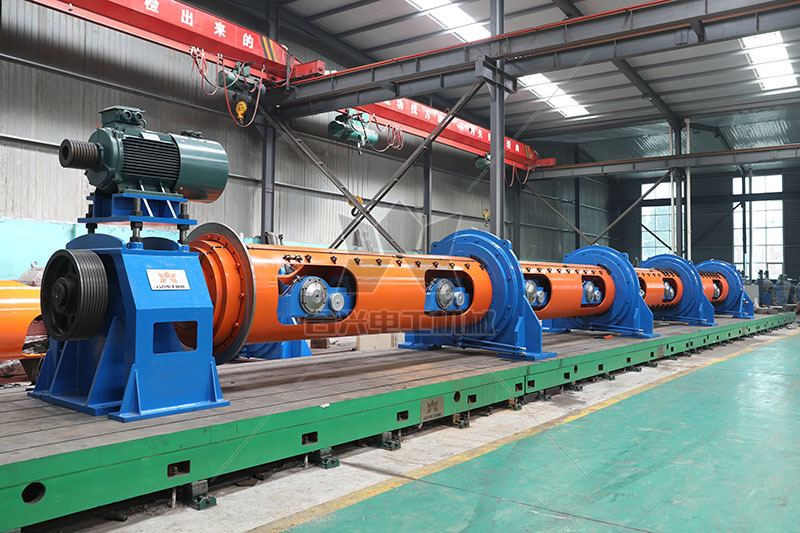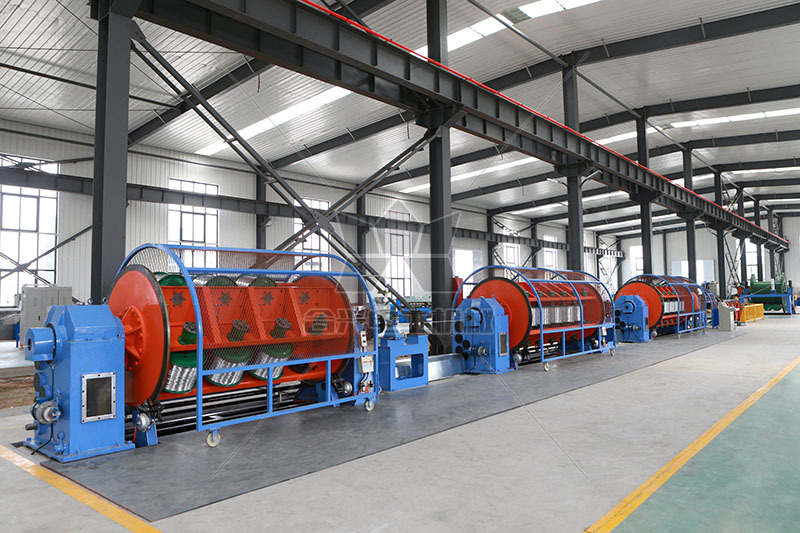Understanding the Different Types of Wire and Cable Equipment
Release time:
2025-06-14
Wire and cable equipment is pivotal in a multitude of industries, serving as the backbone for electrical distribution and communication systems

Wire and cable equipment is pivotal in a multitude of industries, serving as the backbone for electrical distribution and communication systems. From residential wiring to complex industrial applications, understanding the different types of wire and cable equipment is essential for engineers, technicians, and DIY enthusiasts alike. This guide aims to elucidate the various types of wire and cable, their manufacturing processes, applications, and trends shaping the future of this essential industry.

Types of Wire and Cable Equipment
The wire and cable equipment landscape is diverse, with various materials and designs tailored for specific applications. Below, we delve into the most common types of wire and cable.
Copper Wire
Copper wire is one of the most widely used materials in electrical wiring due to its excellent conductivity. It is utilized in various applications, including residential wiring, telecommunications, and industrial machinery.
Key Characteristics of Copper Wire:
- High conductivity allows for efficient power transfer.
- Flexibility makes it suitable for various installations.
- Corrosion resistance extends its lifespan.
Copper wire comes in several forms, including solid, stranded, and tinned, each catering to specific needs. Solid copper wire is often used in permanent installations, while stranded wire is ideal for applications requiring flexibility.
Aluminum Wire
Aluminum wire is a lighter and more cost-effective alternative to copper wire. It's commonly used in large-scale electrical distribution due to its favorable weight-to-strength ratio.
Key Characteristics of Aluminum Wire:
- Light weight reduces structural load.
- Cost-effective compared to copper.
- Requires larger diameters for the same conductivity, which can affect installation.
Although aluminum wire is less conductive than copper, advances in technology have made it a viable option in many settings, especially for overhead power lines.
Fiber Optic Cable
Fiber optic cables are revolutionizing the telecommunications industry by providing high-speed data transmission over long distances without signal degradation.
Key Characteristics of Fiber Optic Cable:
- Enables high bandwidth and faster data rates.
- Resistant to electromagnetic interference (EMI).
- Offers secure data transmission, making it ideal for sensitive information.
Fiber optic cables consist of thin strands of glass or plastic fibers that transmit light signals. They are primarily used in internet and cable television services, as well as in medical and military applications.
Coaxial Cable
Coaxial cables are widely recognized for their use in television and internet connections. They consist of a central conductor, an insulating layer, a metallic shield, and an outer insulating layer.
Key Characteristics of Coaxial Cable:
- High resistance to signal interference.
- Suitable for both audio and video signals.
- Durable and flexible, making it easy to install.
Coaxial cables are essential for high-frequency signals, enabling the seamless transmission of data in various communication systems.
The Manufacturing Process of Wire and Cable Equipment
The manufacturing of wire and cable equipment involves several critical steps that ensure quality and performance.
Raw Material Selection: Depending on the type of wire or cable, manufacturers select appropriate raw materials—copper, aluminum, or plastic fibers.
Wire Drawing: For metallic wires, the raw material undergoes a drawing process, where it is pulled through dies to reduce its diameter while increasing its length.
Insulation: After drawing, the wires are insulated with materials such as PVC or polyethylene. This step is crucial to prevent electrical leakage and ensure safety.
Assembly: Wires are then assembled into various configurations, depending on the intended use. For example, multiple wires might be bundled together to form a cable.
Testing: Quality control is paramount. Manufacturers conduct rigorous testing to ensure the wires meet safety and performance standards.
Application Fields of Wire and Cable Equipment
Wire and cable equipment finds applications in numerous fields, each with unique requirements.
Electrical Distribution: Residential and commercial buildings rely on various wires to distribute electrical power safely.
Telecommunications: Fiber optic and coaxial cables are integral to internet and telecommunications networks.
Automotive Industry: Wires and cables are essential for vehicle wiring systems, ensuring proper functioning of electrical components.
Industrial Automation: In manufacturing, specialized cables support machinery and data transfer between devices.
Medical Devices: Wires and cables are vital in medical equipment, requiring strict adherence to safety and performance standards.
Choosing the Right Wire and Cable Equipment
Selecting the appropriate wire and cable equipment involves understanding the specific requirements of the project at hand. Consider factors like:
- Material: Copper for conductivity, aluminum for weight, or fiber for data transmission.
- Application: Ensure the chosen equipment meets the necessary standards for its intended use.
- Environment: Factor in temperature, humidity, and potential exposure to chemicals or physical stress.
Consulting with experts and referencing industry standards can also aid in making informed choices.
Safety Considerations in Wire and Cable Use
Safety is paramount in any electrical installation. Here are key considerations:
- Insulation Integrity: Regularly check insulation for any signs of wear or damage.
- Overloading: Ensure wires are not overloaded with current beyond their rated capacity.
- Proper Installation: Follow the manufacturer's guidelines for installation to prevent hazards.
Understanding the safety standards and regulations applicable in your region ensures compliance and promotes safer electrical practices.
Future Trends in Wire and Cable Equipment
The wire and cable industry is evolving with technological advancements and changing consumer needs. Key trends include:
- Smart Cables: Integration of sensors in cables for real-time monitoring of performance and safety.
- Sustainable Materials: Increased focus on environmentally friendly materials and production processes.
- Higher Data Transmission Rates: With the rise of 5G technology, the demand for high-speed data transmission continues to grow.
- Automation in Manufacturing: Advanced machinery for automation is enhancing production efficiency and quality control.
Understanding the different types of wire and cable equipment is essential for anyone working in or with the electrical and electronic industries. By familiarizing ourselves with the characteristics, manufacturing processes, and applications of these materials, we can make informed decisions that enhance safety, efficiency, and performance in our projects. As we move into an era of rapid technological advancement, staying abreast of the latest trends will ensure that we remain competitive and compliant in this ever-evolving field.
TAG:
Recommend News
HEXING CABLE MACHINERY
TEL: +86-317-3601666, +86-317-3236119
FAX: +86-317-3618408
E-MAIL: china@hbhxdg.cn
E-MAIL: hbhxdg@gmail.com
WEB: http://www.hbhxdg.cn
ADD: Baoantun Industrial Zone, Hejian City, Hebei Province

